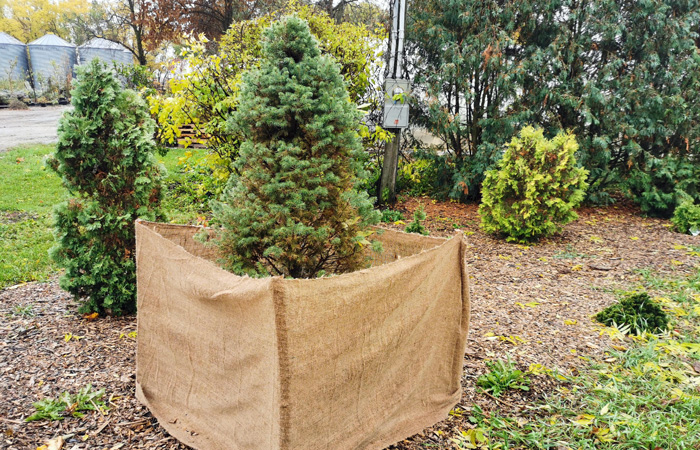Working at our nursery this year I was sad to hear back from some customers about plants that did not survive the winter. There are always some that do not survive but this year had a few extra. We had an exceptionally challenging fall with the early snow in October that melted and made everything soggy. Along with a late snow cover after that it really was a stressful season for young and old plants alike. Much of it could not be helped, but there are many things you can do to give your plants the best chance possible.
One of the most crucial factors of preparing your plants for winter is proper watering. There is a popular idea that you need to water your trees and shrubs heavily in fall just before freezing. This is not necessarily true for every tree and with the wet fall we have had this year we will need to think twice.
Evergreens will benefit from adequate and consistent watering from spring thaw until winter frost. Soaking them heavily in Fall will not be sufficient and cannot undo the damage caused by a summer of dehydration. Instead, continue watering established plants every seven to ten days depending on the weather. Continue doing this until heavy frost begins. This will ensure the plant is well hydrated and ready for a long hibernation. Spreading wood chip mulch around the base will help retain moisture, prevent weeds from stealing it away, and help prevent frost damage to the roots. It also enriches the soil, feeding beneficial fungi.
Autumn Blaze Maple on the other hand requires an entirely different approach. Some trees like Autumn Blaze are accustomed to longer growing seasons and need to be “grown hard”. This essentially means planting in a high, well-drained area and letting grass grow close to the trunk. This will deprive the tree of some of its moisture, therefore “starving” the tree into an early hibernation. This method is only recommended on a few select trees that need the push and could be harmful if used on the wrong varieties.
Protecting young trees trunks with a tree wrap is another vital step. It is a plastic tube about 3′ long that can be wrapped around the trunk. This will prevent rodents from eating the tender young bark and protect the tree against frost cracking and sun scald. Placing a cage of stucco wire around your plant will repel rabbits and deer at the same time.
The shrubs need protecting too. Having adequate snow cover is very important for all perennials and many small shrubs too. Branches that are exposed above the snow line will often freeze back whereas. Something to remember next time you are shovelling the sidewalk: aim for the bushes when the snow is light and fluffy. Pruning in Manitoba tends to be most effective in early spring (remove winter dieback and rejuvenate at the same time)
Burlap wrapping is another thing that can help protect plants from winter sun damage. It is especially helpful with young evergreens. The recommended method is putting four wooden posts in the ground and stapling burlap fabric to the post about four feet high. Make sure the fabric is an inch beyond the branches. This will be tall enough to block the sunlight reflecting off the snow, while still giving the tree enough room to breath. If the tree is wrapped directly it will serve the same purpose but the foliage will suffer from being crowded.
We can never guarantee what the winter will bring, which is why it is best to be prepared.




